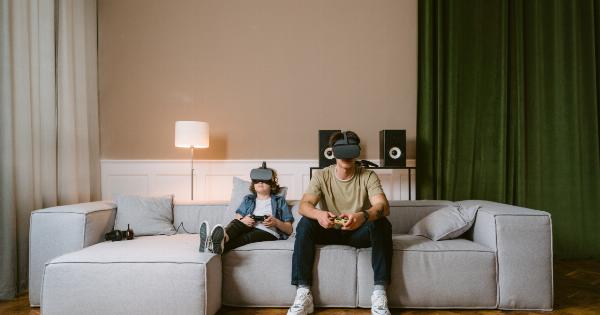In today’s digital age, adolescents are spending more and more time glued to their screens. Whether it’s browsing social media, playing video games, or watching YouTube videos, technology has become an integral part of their daily lives.
While the benefits of technology are vast and undeniable, excessive usage can have a significant impact on their mental health. This article delves into how technology usage affects adolescents’ mental health.
Increased Risk of Depression and Anxiety
Adolescents who spend too much time on their screens are at a higher risk of developing depression and anxiety.
According to a study published in JAMA Pediatrics, adolescents who spend seven or more hours a day on screens are twice as likely to be diagnosed with depression and anxiety than those who use screens for only an hour a day. Technology can be a significant source of stress and anxiety, especially when used excessively. Social media, for example, can lead to feelings of loneliness, inadequacy, and fear of missing out (FOMO).
Disruption of Sleep Patterns
Excessive technology usage can disrupt adolescents’ sleep patterns. The blue light emitted by screens inhibits the production of melatonin, a hormone that regulates sleep.
Using screens late at night can also keep adolescents aroused, making it harder for them to fall asleep. According to experts, adolescents need at least nine hours of sleep a night to maintain their physical and mental health. By spending too much time on screens, adolescents are depriving themselves of the sleep they need.
Increase in Impulsive Behavior
Using screens for extended periods can lead to an increase in impulsive behavior. Adolescents who spend too much time on screens are more likely to engage in risky behaviors and make impulsive decisions.
This is because spending too much time on screens can affect the frontal lobes of the brain, responsible for decision-making, impulse control, and reasoning. As a result, screens can interfere with the normal development of these vital brain functions and increase adolescents’ susceptibility to impulsive behavior.
Reduced Physical Activity
Overuse of technology can lead to a sedentary lifestyle, which can be harmful to adolescents’ physical and mental health.
Spending too much time on screens can lead to reduced physical activity, which can result in obesity, poor cardiovascular health, and other health issues. Physical exercise is essential for regulating mood, improving cognitive function, reducing stress levels, and fostering social connections. By neglecting physical activity in favor of technology, adolescents are neglecting their health.
Decreased Face-to-Face Communication
Excessive technology usage can also lead to a decrease in face-to-face communication. According to research, adolescents who spend too much time on screens have difficulty communicating face-to-face with their peers and family members.
This can lead to feelings of loneliness, isolation, and disconnection, which can have a significant impact on their mental health and well-being. Adolescents need to learn how to communicate face-to-face with others to develop social skills and maintain healthy relationships.
Increased Cyberbullying
Cyberbullying is a prevalent risk associated with technology usage. Adolescents who spend too much time on screens are more vulnerable to cyberbullying, which can lead to depression, anxiety, and other mental health issues.
Cyberbullying can be insidious because it can occur anonymously, making it difficult to identify and prevent. Adolescents need to be aware of the risks associated with cyberbullying and how to protect themselves from it.
Impact on Brain Development
Excessive technology usage can also have long-term effects on adolescents’ brain development. Brain development continues into early adulthood, and excessive technology usage can interfere with this process.
A study published in The Lancet Child & Adolescent Health found that adolescents who spent more than seven hours a day on screens had a thinner cortex, which is a vital part of the brain responsible for processing information. The thinner cortex has been associated with lower academic performance, decreased cognitive functioning, and increased risk of mental health issues.
Conclusion
Technology has undoubtedly revolutionized the way we live, work and communicate. However, excessive use of technology can have a negative impact on adolescents’ mental health and well-being.
Parents, educators, and caregivers need to be aware of the risks associated with technology usage and take steps to ensure that adolescents develop healthy technology habits. By monitoring technology usage, fostering physical activity and face-to-face communication, and educating adolescents about the risks associated with cyberbullying and excessive screen time, we can help them maintain their physical and mental health.































